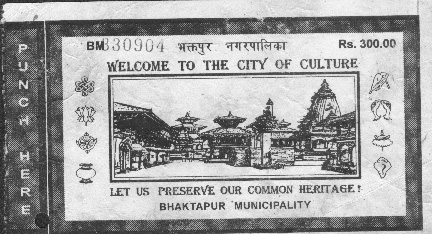
Contemporary studies of tourism tend to theorize tourism in one of two ways. On the one hand is the postcolonial critique in which the tourist experience is posed as not only essentially spurious and superficial, but as politically and ethically wrong. On the other hand, studies of tourism tend to be theorized as a pilgrimage by alienated modern individuals in search of authentic culture.
The two theories of tourism are not exclusive. In a sense, both are partially correct‹cultural tourism is a postcolonial phenomenon that is powered by the search for meaning, which is based on the perception that it is lacking in postindustrial culture and that it exists in the opposite of modern urban life, which the Third World is seen to hold. Yet, while these two theories may be true, they both fail to capture how tourism operates as an everyday practice from a Bhaktapurian perspective.


